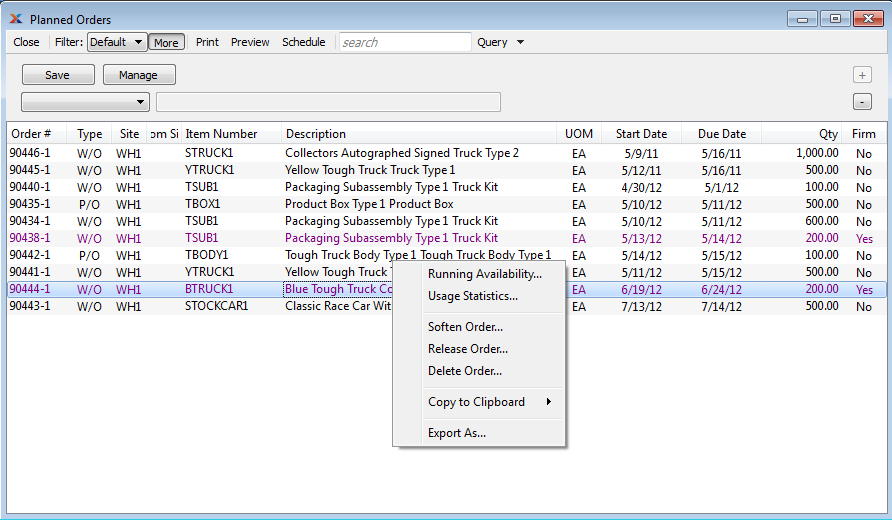
|
xTuple ERP Reference Guide |
The "Planned Orders" screen shows you the Planned Orders created by the Material Requirements Planning (MRP) system to meet existing demand. From this screen you can manage your Planned Orders—from releasing Orders to firming them, editing them, or deleting them. The information on this screen will be updated whenever MRP is run.
Here are some tips for using this screen:
Use the right-click menu to manage your Planned Orders.
The Running Availability option on the right-click menu will help you to understand the relationship between Planned Orders and the demand they are pegged to.
When a Planned Work Order is released, the Create Work Order screen will appear with Work Order details automatically filled in.
Releasing a Planned Purchase Order results in a Purchase Request, which may in turn be released from the Purchase Request reports.
In the case of Planned Purchase Orders, the quantity will always be represented in the Inventory Unit of Measure (UOM)—regardless of the Vendor UOM used on any existing Purchase Orders.
Planned Orders must be firm before they will be considered as a valid source of supply by Material Requirements Planning (MRP) when MRP is run.
Firm Planned Orders will display in blue.
If you edit a firm Planned Order the Order will no longer be firm. It will have to be re-firmed.
The following screenshot shows the "Planned Orders" screen:

The default filter on the "Planned Orders" screen shows all Planned Orders for the current day. You can build your own search criteria using the following options:
Select a filter from the list of available filters, then select the QUERY button to generate search results. Only saved filters will appear in this list.
Select this button to show the parameters underlying the saved filter. To hide the parameters, click the MORE button a second time.
When building a custom query, you have the following options:
Select to add a new parameter to the query.
Select to remove a parameter from the query. This option is disabled for default parameters.
Select to save your filter for future use. Saved filters will appear in the list of available filters.
Select to manage your saved filters. To learn more about managing filters, please see Section 2.1.2, “Search Filters”.